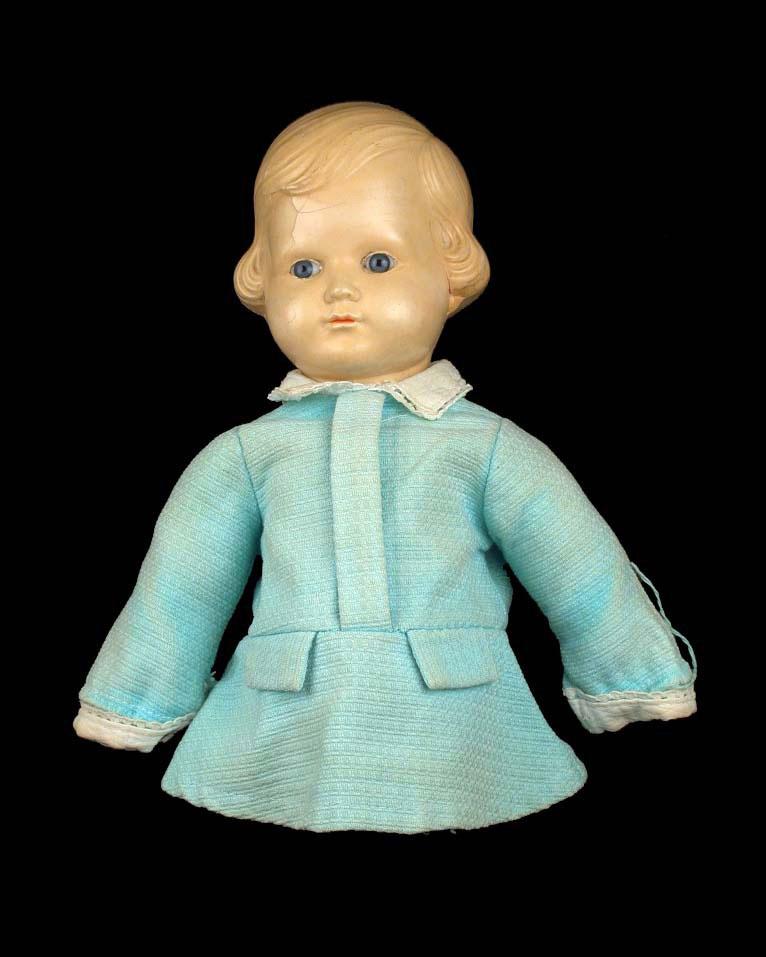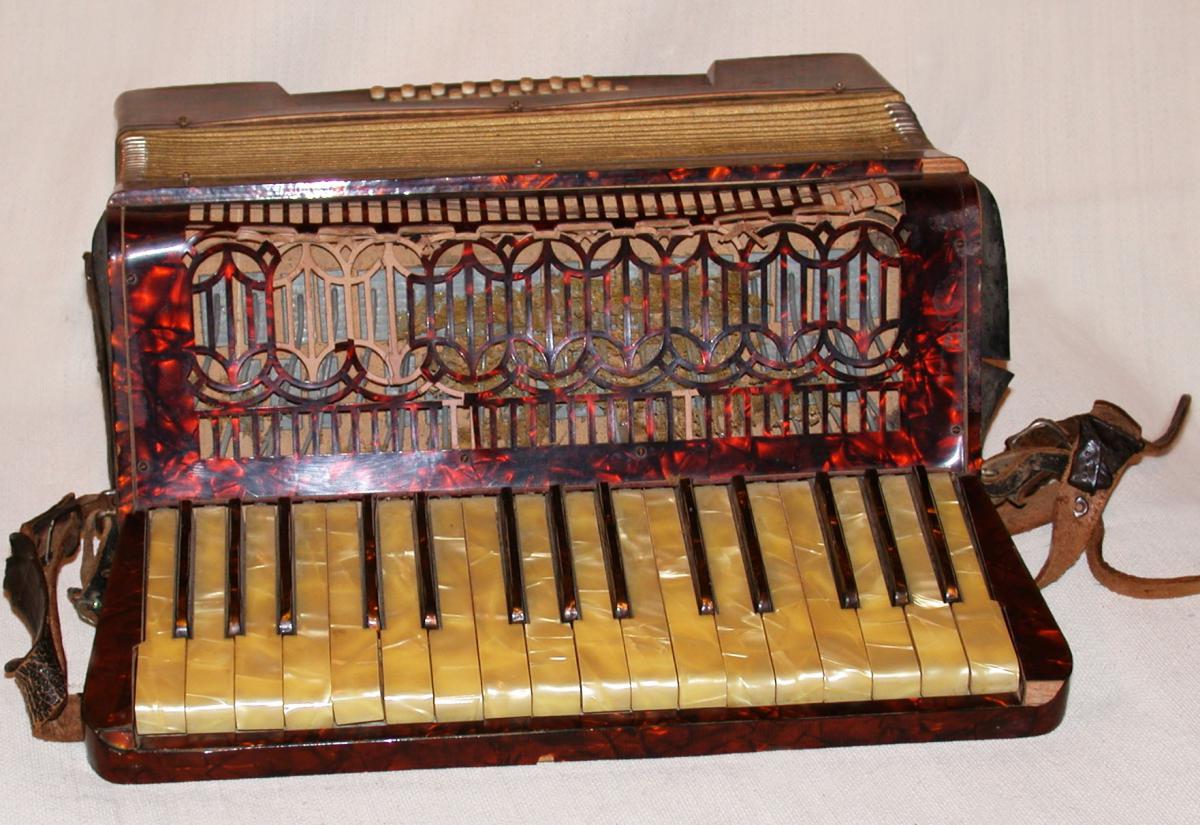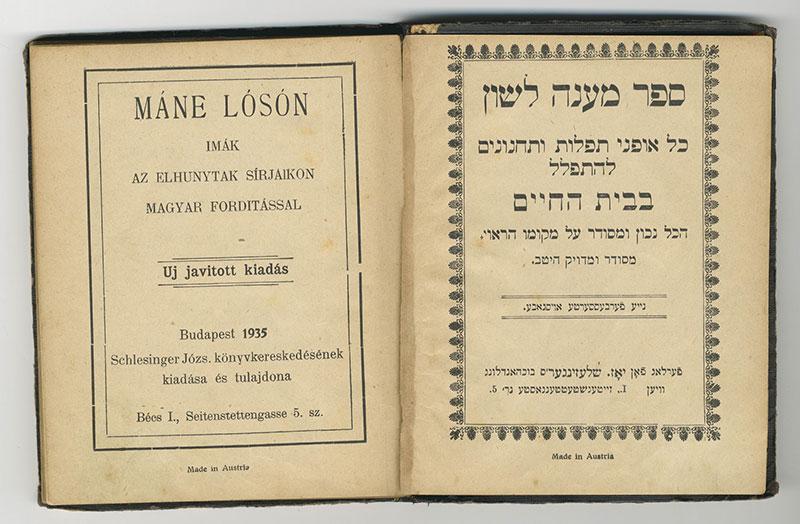Yad Vashem Photo Archives, 3132/1

Agatha was five years old when the deportation of Slovak Jewry to the concentration camps began. Moshe and Olga Ressler and their three daughters managed to evade deportation for three years, finally fleeing and wandering in forests and between villages. Out of all her toys, Agatha chose to take the doll with her.She believed that the doll protected her and her whole family, all of whom survived.
Yad Vashem Artifacts Collection
Donated by Miriam Frumer (Agatha Ressler ), Petach Tikva, Israel


After the occupation of Macedonia in spring 1941, Shabtai had to give a Muslim friend the accordion his parents had given him for his Bar Mitzvah. He then fled with his sister Gita to relatives in Greece. From there, the two were deported to Birkenau, and forced on a death march to Bergen-Belsen. Shabtai perished there two days after the liberation.
Yad Vashem Artifacts Collection
Donated by Simcha and Shmuel Kalderon, Kfar Sirkin, Israel


The Artifacts Collection - Yad Vashem

Bulgaria
On March 4, 1943, the Bulgarian government, which had annexed Thrace from Greece and Macedonia from Yugoslavia, arrested all the Jews in these districts and sent them to two detention camps. Shortly afterwards, the Thracian Jews were transported in cattle cars with a Bulgarian police escort to the port town of Lom on the Danube River and handed over to the Germans. The Jews were loaded onto four small boats and arrived in Vienna ten days later. From there, they were sent to Treblinka to be murdered. The Jews of Macedonia were deported to Treblinka by land. In all, 11,370 Jews were deported.
Concurrently, the Bulgarian government was preparing for the first deportation of Bulgarian Jews from Plovdiv and Kyustendil. Once knowledge of the deportation plans began to spread, a group of members of Parliament, heads of the Church and public figures worked together to put pressure on the King and his government to stop the deportations. On May 24, 1943, the plan to deport Bulgaria’s 48,000 Jews was cancelled.
Greece
The Jews of Greece were deported in several phases. The expulsion from Thrace and Macedonia in March 1943 was followed in March-May by deportations from Salonika and the vicinity, which were under German control. The Jews of Salonika were demeaned, marked, dispossessed, and – ahead of the deportation – briefly ghettoized. In the summer of 1944, Jews living in the areas that Germany seized after the surrender of Italy were deported. Nearly 60,000 of the 77,000 Greek Jews were murdered in the Holocaust, most in Auschwitz-Birkenau.
Yugoslavia
The Germans conquered Serbia, which was part of Yugoslavia, in April 1941. In July a popular uprising broke out. The local German government executed the Jewish males who had been interned in camps. Most were murdered between September-December 1941. Approximately 8,000 women and children were incarcerated in the Sajmiste camp near Belgrade and murdered in March-May 1942 in gas vans.
Ante Pavelic’s independent state in Croatia murdered thousands of Serbs and opponents of the regime. In June 1941 the deportation of the Jews of Zagreb to the concentration camps began. The Jews of Bosnia and Herzegovina were deported in August. Most of the deportees were murdered shortly thereafter. In August 1941, Jasenovac, the largest of the concentration camps in the country, was opened. In addition to the 25,000 Jews murdered there, hundreds of thousands of Serbs, thousands of gypsies and opponents of the regime were also murdered there. The camp was liquidated at the end of April 1945. Approximately 66,000 of Yugoslavia’s 80,000 Jews were murdered during the Holocaust.
Slovakia
Slovakia, a Nazi satellite state, expressed no opposition to the program of deportations to the east. Slovakian Jews were the first to be murdered in Majdanek and Auschwitz-Birkenau. The “Working Group” in Slovakia – a semi-underground group of Jews, under the leadership of Gisi Fleischmann and Rabbi Michael Dov Weissmandel – sought to save Jews, both from Slovakia and other countries, by paying ransoms for them. Their attempts succeeded only to a very small degree.
During 1942, 58,000 Slovakian Jews were sent to the extermination camps. The deportations were halted late that year but resumed at the end of the Slovakian Uprising (August-October 1944). Approximately 100,000 Slovakian Jews perished during the Holocaust. Between 25,000-35,000 Slovakian Jews survived.



